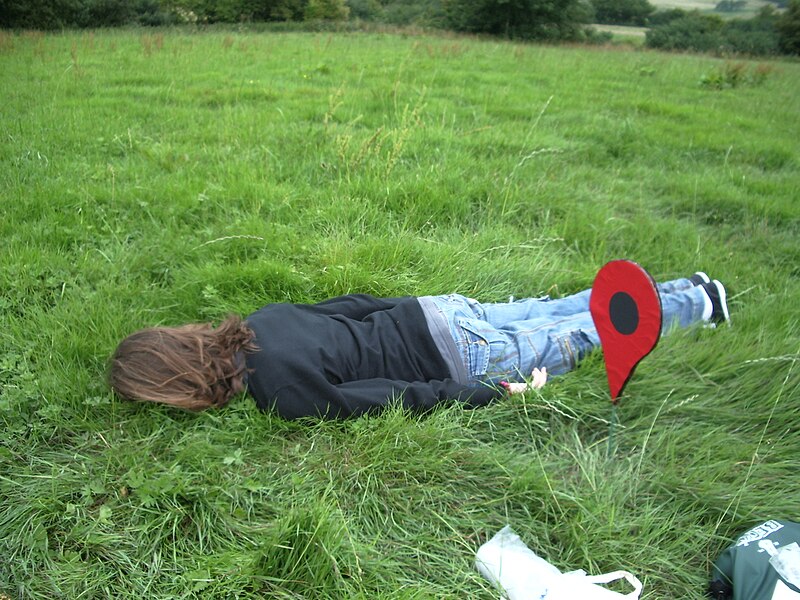Meme -/meem/ [By analogy with gene] Richard Dawkins’s term for an idea considered as a replicator, especially with the connotation that memes parasitize people into propagating them as much as viruses do.
It started as a simple question “will people stop and help you on the street?” Those words by Tom Green began today’s sensation known as planking.
Comedian Tom Green (who may or may not be the father of planking) wanted to know whether or not people would help others on the street. To answer this question, he (or one of his co-workers) went out on the street and planked face-down on the ground where he laid there silently. People passed, some curious, half an hour to an hour later, one man asked if an ambulance should be called. At that point he got up and just walked away.
This experiment, performed in 1994 was, and appears to be, the earliest form of planking, but was likely not done to intentionally create a new fad, as it was designed to answer a question about human behavior.
Planking is currently defined as lying stiff as a board on a surface where your upper body and legs hang off the surface. While this definition of planking isn’t incorrect, sophomore Alex Bernard defines planking exactly, “You must be laying down on any surface with your body at a one hundred eighty degree angle.”
The only difference between the two definitions is that modern planking engages the core much more efficiently. Freshmen Jacob Green planks because, “it helps make my core stronger.”
Modern day planking requires the ability to lay face-down on a small portion of one’s chest and stomach. Raising the legs and holding up the upper half of the chest requires the core to work and makes planking a great exercise.
During a study at Millennium High School, a student planked on two separate occasions: during a parent teacher night and during a passing period. The purpose was to see how the planker was viewed and treated.
During parent-teacher night, parents were curious but kept a distance from the planking student. One parent went so far as to accuse the school of lacking discipline. Even so, the parents kept out of the student’s personal space.
During a passing period, students were curious and invaded the same student’s personal space. It is thought that the difference in behaviors is two fold. First, many teens knew what planking is, and secondly the passers-by knew the planker.
The study concludes that planking is much more effective if done around those who are strangers and unfamiliar with the trend.
Whether its modern planking or old-fashioned planking, planking is a fun activity that has gone viral. So if you’re bored out of your mind and looking for something to do, plank. It’s fun, it’s popular and it’s great for your core.
It started as a simple question “will people stop and help you on the street?” Those words by Tom Green began today’s sensation known as planking.
Comedian Tom Green (who may or may not be the father of planking) wanted to know whether or not people would help others on the street. To answer this question, he (or one of his co-workers) went out on the street and planked face-down on the ground where he laid there silently. People passed, some curious, half an hour to an hour later, one man asked if an ambulance should be called. At that point he got up and just walked away.
This experiment, performed in 1994 was, and appears to be, the earliest form of planking, but was likely not done to intentionally create a new fad, as it was designed to answer a question about human behavior.
Planking is currently defined as lying stiff as a board on a surface where your upper body and legs hang off the surface. While this definition of planking isn’t incorrect, sophomore Alex Bernard defines planking exactly, “You must be laying down on any surface with your body at a one hundred eighty degree angle.”
The only difference between the two definitions is that modern planking engages the core much more efficiently. Freshmen Jacob Green planks because, “it helps make my core stronger.”
Modern day planking requires the ability to lay face-down on a small portion of one’s chest and stomach. Raising the legs and holding up the upper half of the chest requires the core to work and makes planking a great exercise.
During a study at Millennium High School, a student planked on two separate occasions: during a parent teacher night and during a passing period. The purpose was to see how the planker was viewed and treated.
During parent-teacher night, parents were curious but kept a distance from the planking student. One parent went so far as to accuse the school of lacking discipline. Even so, the parents kept out of the student’s personal space.
During a passing period, students were curious and invaded the same student’s personal space. It is thought that the difference in behaviors is two fold. First, many teens knew what planking is, and secondly the passers-by knew the planker.
The study concludes that planking is much more effective if done around those who are strangers and unfamiliar with the trend.
Whether its modern planking or old-fashioned planking, planking is a fun activity that has gone viral. So if you’re bored out of your mind and looking for something to do, plank. It’s fun, it’s popular and it’s great for your core.













